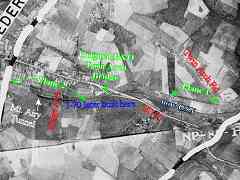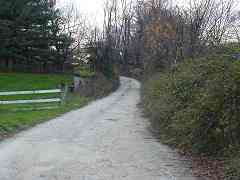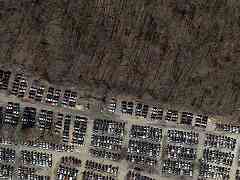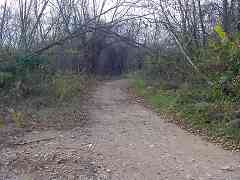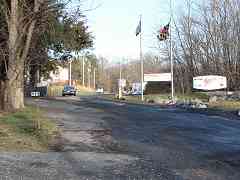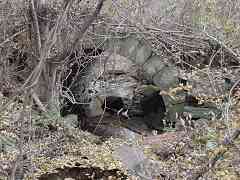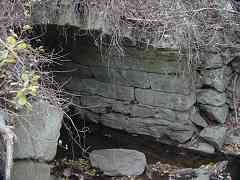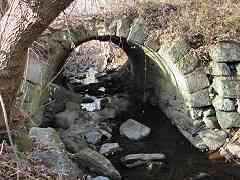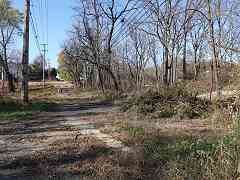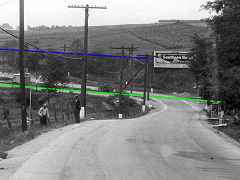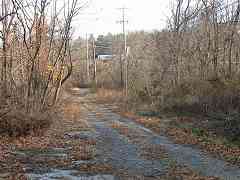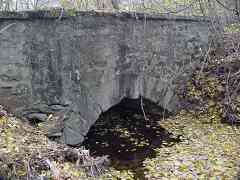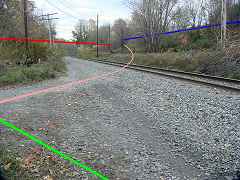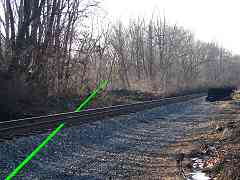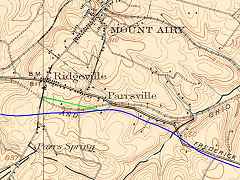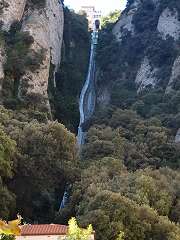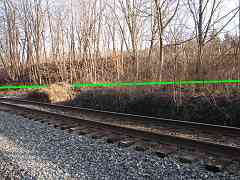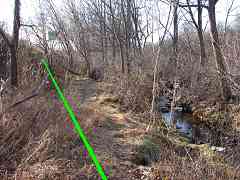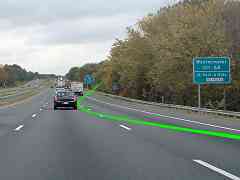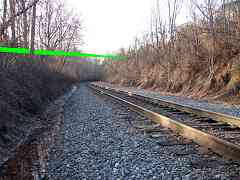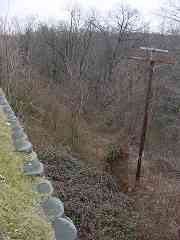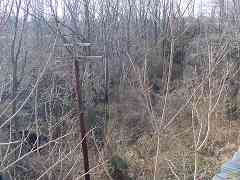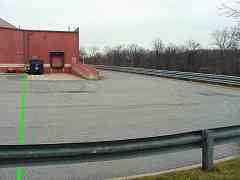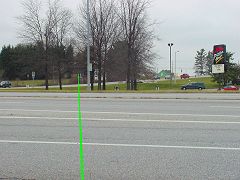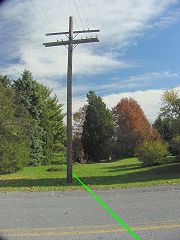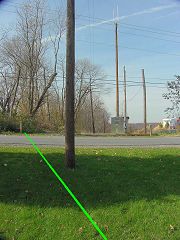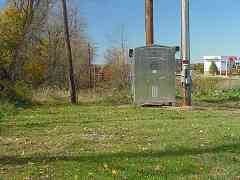|
This driveway leading up from Twin Arch Road to a junkyard marks the
location of B&O Plane 1, the first inclined plane encountered on the
trip west.
As a result, B&O chief engineer Jonathan Knight's estimate of how
steep a grade future locomotives could climb was little more than
an educated guess, and that guess turned out to be quite conservative.
Consequently, Plane 1 hardly looks formidable by today's standards.
The even grading, the angle,the unusual road surface, the cut, the
proximity of commercial property (the junkyard) in an otherwise
residential area all say a railroad had been here. The curve, however,
is a puzzle. It is likely the planes were straight, or nearly straight,
runs, so the I surmise the curve was added later, perhaps to facilitate
room for a nearby house.
|
